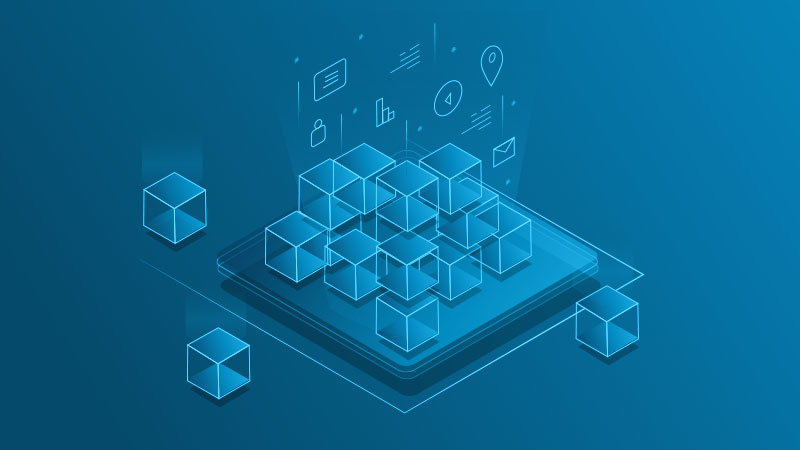Preparing Data and Analytics for the New Evolution
Data and Analytics (D&A) has always served as the cornerstone for modern enterprises, but a new evolution has been brewing. One that is poised to maximize potential across the board for an organization through the data they have long been holding onto, but only if they are prepared to take it on. Building upon Trace3’s Innovation Team 2024 Enterprise Technology Themes series, let’s begin our walk through the evolution of the increasingly complicated D&A ecosystem.
The Shift Towards an AI Driven Enterprise
In the past year the enterprise was taken by storm with the introduction of GPT’s and Generative AI (Gen AI) applications, forcing leaders to quickly think and deliver swift adjustments in their D&A frameworks. Despite leveraging modern data platforms, organizations still face challenges ranging from time-consuming data integration, pipeline bottlenecks, and sluggish data movement between ingestion and insight. Compounding these already existing problems, the new drive towards Gen AI usage is only creating more pressure.
Estimates are suggesting that by 2028, 80% of enterprises will be leveraging Gen AI as a forward driver and differentiator for their organizations. So, with only four years to make it happen and remain competitive, the race is on to become as prepared as possible for implementation. At the same time though a vast majority of Gen AI failures occur due to issues related to the data backing up these very same models and AI applications. With this in mind, as the phase of augmentation in the D&A world draws to a close, organizations are now grappling with the challenge of evolving from data-driven to AI-driven businesses.
In response to these shifts, our team has identified a clear signal, a theme built on the indication of what’s to come and what’s best suited to address the needs of other rising trends we’ve seen in the market. As organizations transition from data-driven to AI-driven models, the focus shifts towards Efficiency in D&A. To meet the requirements brought on by this change, enterprises will need to become more efficient in how data is ingested, transformed, stored, and delivered while also improving their level of efficiency in handling operations ranging from their machine learning usage to the build of Gen AI applications.
This ultimately begs the question, what does this theme mean for solutions coming to market and what can organizations anticipate in the coming year as they navigate the AI era?
How Emerging Solutions are enhancing Data & Analytics
It’s easy to see where the holdups lie in the data world, many organizations have been dealing with these for quite some time now. However, the solution to the problem was previously masked by introducing additional tooling, software, databases, and increasing the complexity of the stack rather than finding a truly holistic remediation strategy. This is where the pivot solutions are beginning to make lies. Moving away from point solution tooling, and instead building out wider platforms and implementing innovative products designed to provide more than just a band aid. Here’s how they’re doing it:
High Quality Data & Advanced Management Frameworks
The key to an emerging AI stack is the data that backs it up, as many have come to say around the Gen AI hype “garbage in means garbage out.” Because of this, the integrity of the data being ingested and managed by an organization has to be kept to a higher standard than ever before while also pushing the efficiency in understanding the impact of this data as quickly as possible. To meet this need, solutions have begun implementing strong capabilities in data observability, automation in data discovery, management, ETL and adaptive D&A governance. With these capabilities, an organization is more likely to succeed in discerning what data is of use in real time, whether that data meets quality standards, and how best to implement it within a wider strategy for the organization. Take for instance an organization hoping to take advantage of a standard Gen AI chat solution, benefits provided by some of the solution capabilities discussed can be crucial in both efficient and optimal performance. ETL solutions ensure that scalability can be achieved through efficient handling of large volumes of data while data observability tooling allows for an expedited identification of root causes within the system by monitoring data inputs and outputs.
Furthermore, data management in general will require significant restructuring to ensure efficiency across an enterprise is maximized. Increasing levels of automation and reducing complexity for less-technical consumers has been leading to popularity in data product, data mesh, and data fabric-oriented solutions for some time now. However, with the monolithic legacy frameworks currently present, there has been some major resistance to these movements. It’s at this point that solutions making smaller steps towards these goals come into a pivotal role in the coming year. Examples of this range from startups expanding upon data sharing & collaboration platforms, graph & vector-based storage, and the introduction of composable D&A capabilities into their tooling. A highly relevant update in this area to take a look at is the recent release of Microsoft Fabric, a SaaS platform aimed at integrating data-related components into a cohesive whole while providing a unified view of a company’s data. Although primarily focused on offerings from Microsoft, the concept can paint an early picture of what a broader framework could look like for an organization.
Unified & Automated AI/ML Operations
Another indicator of efficiency and AI readiness in an organizations DataOps lies in their ability to quickly move from initial ingestion of data to production of actionable insights through machine learning and artificial intelligence. Many solutions in this space have been on the rise over the last couple years with best-of-breed capabilities in differing areas of the ML lifecycle. But many organizations have found it hard to consolidate and streamline processes with the plethora of tooling at hand. It’s at this point that many data science and machine learning platforms have begun to transform into MLOps Platforms aimed at deriving the most efficiency across all roles involved in ML development, deployment, and production management.
In addition, many of these capabilities have become easier for companies dipping their toes in the water to automate across the lifecycle. Enter AutoML based solutions, a new subset of tooling that abstracts the development and deployment of AI/ML models so that ROI can be achieved with less experience and time involved. Data teams will need to spend less time on the proper selection of algorithms, directing training, and monitoring output and more time on ensuring the proper use cases are being tackled across the organization as quickly as possible.
Generative Decisions, Actions, & Insights
To touch on a final core aspect of how solutions are improving the efficiency of D&A across the board, let’s take a look at how critical integration of Gen AI will be in an organization’s daily operations. Already, solutions have risen to address bottlenecks and accelerate pipelines in D&A with AI Assisted Data Preparation and Prompt-Driven Data Pipeline Generation. Many of these features can be found embedded in enterprise app & tooling through AI assistants. On the analytics side, building of visualizations and production of insight narratives are being accelerated greatly with some of the vendor capabilities currently in market. Many of these are even further enhanced through Natural Language Query experiences allowing for less-technical users insight into their own data.
Solutions
To sum it all up, new solutions are rising in the D&A market to address the growing needs of efficiency for a Gen AI driven shift. An effective enterprise strategy works to improve the quality and management of data while implementing automation in tooling and workflows for both data specialists and consumers at the business level. Solutions are wide-ranging across the varying use cases as discussed and below you can find a non-exhaustive mapping of some solutions being tracked in these spaces to get you started. As always feel free to reach out to us at Trace3 Innovation (innovation@trace3.com) to dive deeper into any of the topics discussed here!

 Patrick Ortiz joined the Innovation team at Trace3 in May 2023 as a summer intern and quickly showcased success in content development and insight discovery. With a background in science and engineering research and a passion for understanding the latest trends across the enterprise IT space, he continues to bring in a forward outlook and deliver on content to help clients understand the ever-changing landscape of IT solutions. He will be completing his bachelor’s degree at Arizona State University and will join the Innovation team full-time. When not in classes or researching, Patrick can be found eating at some of the best foodie locations in whichever city he may be exploring next.
Patrick Ortiz joined the Innovation team at Trace3 in May 2023 as a summer intern and quickly showcased success in content development and insight discovery. With a background in science and engineering research and a passion for understanding the latest trends across the enterprise IT space, he continues to bring in a forward outlook and deliver on content to help clients understand the ever-changing landscape of IT solutions. He will be completing his bachelor’s degree at Arizona State University and will join the Innovation team full-time. When not in classes or researching, Patrick can be found eating at some of the best foodie locations in whichever city he may be exploring next. 
